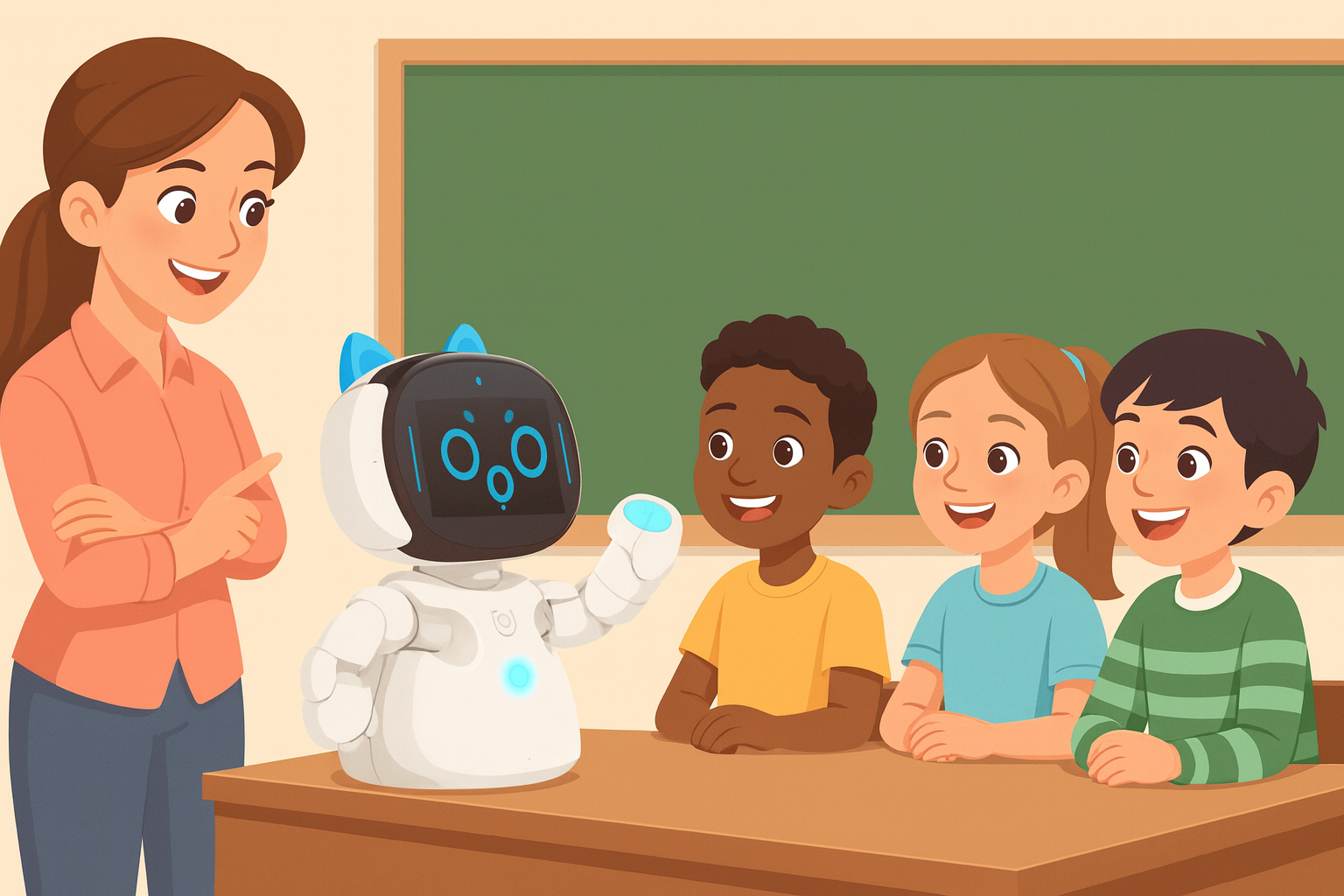How Elementary Teachers Can Use the Telo Robot in Their Classrooms
Bringing AI and robotics into elementary classrooms isn’t science fiction. It is happening today! At Telo AI, we’ve designed an intelligent, voice-interactive robot that helps K–5 students master foundational skills in math and literacy through 1-on-1, personalized learning sessions.
But how exactly can a teacher use a 1-to-1 robot like Telo in a busy classroom of 20+ students?
Let’s walk through how Telo fits naturally into existing instructional time ; and how it can enhance small-group learning, intervention blocks, and differentiated instruction every day.
You Already Do This Every Day. Here’s How Telo Fits Right In
If you’re an elementary teacher, you already run:
- Small group during math or literacy
- Learning centers or station rotations
- Intervention time (Tier 2/Tier 3 via MTSS)
- Independent work blocks
These routines are perfect for integrating Telo: no disruption to existing schedules required.
How Telo Works in the Classroom
Telo is an AI-powered educational robot designed for 1-on-1 instruction. It:
- Talks and listens to the student
- Delivers curriculum-aligned lessons in math, reading, and foundational skills
- Adjusts in real-time based on student responses
- Tracks engagement and mastery for teacher review
- Requires no screen, tablet, or typing
A teacher selects lessons from the Teacher Dashboard, and Telo delivers them directly to each student in 10–15 minute sessions.
Use Cases for Telo in Daily Instruction
1. During Math or Literacy Centers
Telo becomes one of the classroom stations:
- While one group is with the teacher,
- One group works with Telo (individually, one at a time),
- Other students engage in independent practice, games, or tech tools.
2. During Intervention Blocks (Tier 2 or 3)
Students receiving RTI/MTSS support can work with Telo while:
- The teacher works 1-on-1 with another student
- A paraeducator supervises rotation
- The system logs progress for data-based decision-making
3. For SPED or IEP Goal Practice
Special education students often need repetition, pacing, and emotional safety:
- Telo provides individualized, adaptive practice
- Can reinforce IEP goals through verbal prompts and feedback
- Reduces the need for direct adult supervision during every task
Why We Recommend 3 Robots per Classroom
We’ve tested different configurations with real teachers and classrooms. The most cost-effective and impactful setup is:
3 Telo robots per classroom (K–5)
Here’s why:
| Reason | Impact |
|---|---|
| ⏱️ Time Efficiency | 3 students can engage with Telo simultaneously during each center rotation |
| 🔄 Full Class Coverage | Entire class of 20–24 students can rotate through in one instructional block |
| 🎯 Group Differentiation | Each Telo can deliver a different lesson based on the student’s needs |
| 🧑🏫 Teacher Flexibility | Frees the teacher to focus on small groups or assessments |
| 💡 Scalability | Ideal for Title I schools, SPED programs, and MTSS implementation |
Example Schedule with 3 Robots (60-minute Math Block)
| Rotation | Teacher Group | Telo Group (3 students) | Other Students |
|---|---|---|---|
| Round 1 | Group A | Students 1–3 | Groups B, C |
| Round 2 | Group B | Students 4–6 | Groups A, C |
| Round 3 | Group C | Students 7–9 | Groups A, B |
In just one block, 9 students receive 1-to-1 instruction from Telo — with no extra staff needed.
Funding and Implementation Tips
Many schools are using ESSER, Title I, and IDEA funding to purchase Telo. It qualifies as:
- A high-impact intervention tool
- A resource for inclusive classrooms
- A solution for learning loss recovery
We provide:
- Purchase options by classroom or grade level
- Admin dashboards for school-wide tracking
- Training for educators and interventionists
Ready to Bring Telo to Your Classroom?
We’re currently onboarding new schools for Fall 2025 pilots.
Contact schools@mytelo.ai to see Telo in action or learn more about school pricing.
